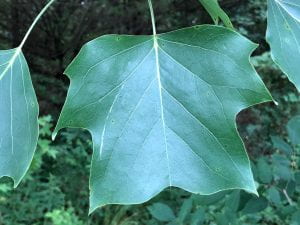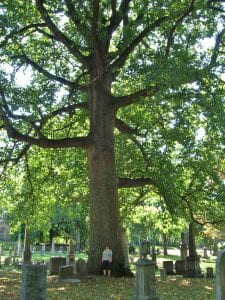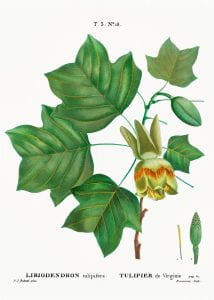Scientific Name: Liriodendron tulipifera
Common Name: tulip tree
Native Range: Eastern North America
Zone: 4 to 9
Plant type & Form: Tree, pyramidal to broad conical habit
Height: 60.00 to 90.00 feet
Spread: 30.00 to 50.00 feet
Bloom Time: May to June
Bloom Description: Yellow with orange band at petal bases
Flower: cup-shaped, tulip-like; yellow with an orange band at the base of each petal; 2” in length
Fruit: dry, scaly, oblong, cone-shaped brown fruits, each bearing numerous winged seeds
Leaf: four-lobed bright green leaves (to 8” across) turn golden yellow in fall
Sun: Full sun
Water: Medium
Soil type & pH: moist, organically rich, well-drained loams
Maintenance: Low
Suggested Use: Very large shade or lawn tree for large landscapes. Generally not recommended as a street tree.
Tolerates: Rabbit, Deer, Clay Soil, Wet Soil, Black Walnut
Notes: Although the flowers are 2” in length, they can go unnoticed on large trees because the flowers appear after the leaves are fully developed. Sometimes the flowers are first noticed when the attractive petals begin to fall below the tree.
Identification notes: Look for leaves, flowers, and/or tall regular trunk




Tulip tree (Liriodendron tulipifera) from Traité des Arbres et Arbustes que l’on cultive en France en pleine terre (1801–1819) by Pierre-Joseph Redouté. Original from the New York Public Library. Digitally enhanced by rawpixel.